Royal Game Of Ur – One Of The Oldest Game Boards Discovered
AncientPages.com - Question: What was the Royal Game Of Ur?
Answer: In the ancient world, board games were as popular as they are today. Board games were very common in ancient Egypt, Mesopotamia and other parts of the world.
The Royal Game of Ur is a board game made between 2600 and 2400 BC. It means the game is at least 4,400 years old!
It was discovered in Mesopotamia (modern Iraq) in the 1920s when the British archaeologist Leonard Woolley was digging into the ruins of a long-buried royal city. Among many amazing treasures, he found several games and the Royal Game Of Ur is one of them.
The board's wood has decayed, but the hard, decorative pattern of shell, red limestone and lapis lazuli (a blueish mineral) has survived. The counters were made from shale and shell.
See also: Ancient Egyptian Toys And Games In Focus
The Ur-style Twenty Squares game board was also known in Egypt as Asseb, and has been found in Pharaoh Tutankhamen's tomb, among other places. Discovery of a tablet partially describing the game play has allowed the game to be played again after over 2000 years, although reconstructions of the detailed rules have differed widely.
The Royal Game of Ur was played with two sets, one black and one white, of seven markers and three tetrahedral dice. After around 1000 BC, the layout of the twenty squares was altered to make the end course for the markers a straight line.
The rules of the game as it was played in Mesopotamia are not completely known but there have been a number of reconstructions of game play, based on a cuneiform tablet of Babylonian origin dating from 177–176 BC by the scribe Itti-Marduk-Balāṭu. It is universally agreed that the Royal Game of Ur, like Senet, is a race game.
AncientPages.com
Expand for referencesMore From Ancient Pages
-
 Medieval Rich People Unknowingly Poisoned Themselves With Lead And Other Hazardous Heavy Metals
Archaeology | Nov 29, 2015
Medieval Rich People Unknowingly Poisoned Themselves With Lead And Other Hazardous Heavy Metals
Archaeology | Nov 29, 2015 -
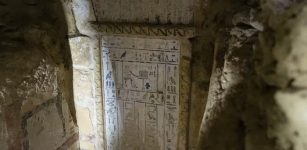 Archaeologists Have Discovered A Mummy Wrapped In Gold – Here’s What It Tells Us About Ancient Egyptian Beliefs
Featured Stories | Feb 7, 2023
Archaeologists Have Discovered A Mummy Wrapped In Gold – Here’s What It Tells Us About Ancient Egyptian Beliefs
Featured Stories | Feb 7, 2023 -
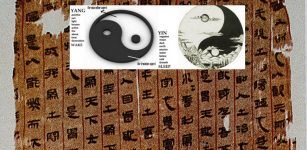 Mawangdui Medical Manuscripts: Oldest Surviving Anatomical Atlas In The World
News | Sep 2, 2020
Mawangdui Medical Manuscripts: Oldest Surviving Anatomical Atlas In The World
News | Sep 2, 2020 -
 On This Day In History: Vasco De Gama Departed On First European Voyage To India – On July 8, 1497
News | Jul 8, 2016
On This Day In History: Vasco De Gama Departed On First European Voyage To India – On July 8, 1497
News | Jul 8, 2016 -
 Mystery In The Stones: Rujm El-Hiri (Wheel Of Ghosts) Was Not An Ancient Observatory – So Why Was It Built? – New Study
Archaeology | Jan 2, 2025
Mystery In The Stones: Rujm El-Hiri (Wheel Of Ghosts) Was Not An Ancient Observatory – So Why Was It Built? – New Study
Archaeology | Jan 2, 2025 -
 Giants Of The Jurassic Seas Were Twice The Size Of A Killer Whale – New Study
Fossils | May 11, 2023
Giants Of The Jurassic Seas Were Twice The Size Of A Killer Whale – New Study
Fossils | May 11, 2023 -
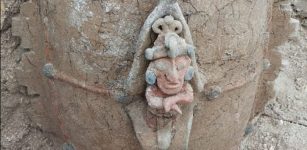 Funerary Urn Depicting The God Of Corn Unearthed In Mexico By INAH Archaeologists
Archaeology | Jan 11, 2024
Funerary Urn Depicting The God Of Corn Unearthed In Mexico By INAH Archaeologists
Archaeology | Jan 11, 2024 -
 Lesicheri Obelisk – Enigmatic Ancient Roman Structure – Bulgaria’s Tallest Surviving Landmark
Featured Stories | Jan 24, 2023
Lesicheri Obelisk – Enigmatic Ancient Roman Structure – Bulgaria’s Tallest Surviving Landmark
Featured Stories | Jan 24, 2023 -
 Thousands Want To Drink Red Liquid From The Granite Sarcophagus In Egypt
Archaeology | Jul 23, 2018
Thousands Want To Drink Red Liquid From The Granite Sarcophagus In Egypt
Archaeology | Jul 23, 2018 -
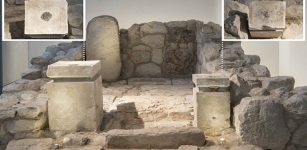 Judahite Shrine Of Biblical Arad Reveals Ancient Use Of Cannabis And Frankincense
Archaeology | Jun 2, 2020
Judahite Shrine Of Biblical Arad Reveals Ancient Use Of Cannabis And Frankincense
Archaeology | Jun 2, 2020 -
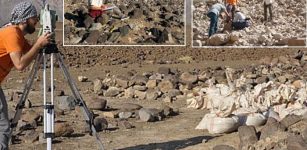 Evidence Of Copper Processing Unearthed At Archaeological Site In Oman
Archaeology | Mar 6, 2024
Evidence Of Copper Processing Unearthed At Archaeological Site In Oman
Archaeology | Mar 6, 2024 -
 Birka Artifacts Shed Light On Vikings’ Daily Life
Artifacts | Jun 24, 2019
Birka Artifacts Shed Light On Vikings’ Daily Life
Artifacts | Jun 24, 2019 -
 Ancient Fossil Found In Sahara Suggests Loch Ness Monster Could Be Real
Archaeology | Jul 27, 2022
Ancient Fossil Found In Sahara Suggests Loch Ness Monster Could Be Real
Archaeology | Jul 27, 2022 -
 On This Day In History: Cyrus The Great And His Army Took Babylon – On Oct 12, 539 BC
News | Oct 12, 2016
On This Day In History: Cyrus The Great And His Army Took Babylon – On Oct 12, 539 BC
News | Oct 12, 2016 -
 Gold Dated To Scythian-Saka Era Unearthed In Valley Of The Kings In East Kazakhstan
Archaeology | Sep 14, 2020
Gold Dated To Scythian-Saka Era Unearthed In Valley Of The Kings In East Kazakhstan
Archaeology | Sep 14, 2020 -
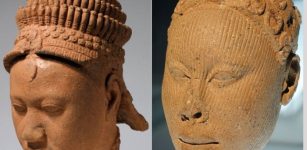 Ife Head: Significance Of The Head ‘Ori’ In Yoruba Ancient And Present Beliefs
Artifacts | Mar 27, 2019
Ife Head: Significance Of The Head ‘Ori’ In Yoruba Ancient And Present Beliefs
Artifacts | Mar 27, 2019 -
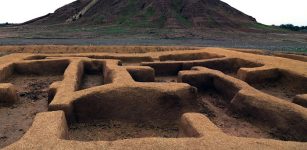 Climate Change May Have Impacted The Rise And Fall Of Middle Eastern Civilizations
Archaeology | Jan 19, 2023
Climate Change May Have Impacted The Rise And Fall Of Middle Eastern Civilizations
Archaeology | Jan 19, 2023 -
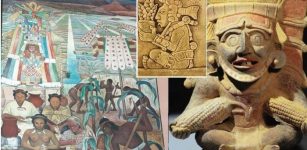 Yum Kaax, Mayan God Of Agriculture, Lord Of Woods And Caretaker Of Animals
Featured Stories | Jul 15, 2020
Yum Kaax, Mayan God Of Agriculture, Lord Of Woods And Caretaker Of Animals
Featured Stories | Jul 15, 2020 -
 Early City Planning In The Kingdom Of Judah Examined
Archaeology | Jul 5, 2023
Early City Planning In The Kingdom Of Judah Examined
Archaeology | Jul 5, 2023 -
 Remains Of A 2,200-Year-Old Roman Fountain Discovered In Assos, Turkey
Archaeology | Aug 17, 2022
Remains Of A 2,200-Year-Old Roman Fountain Discovered In Assos, Turkey
Archaeology | Aug 17, 2022

